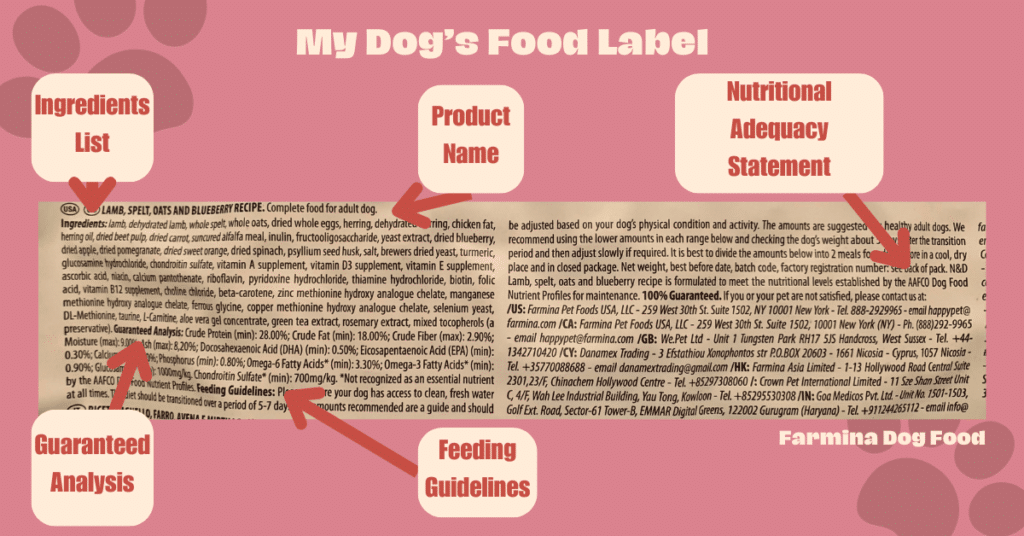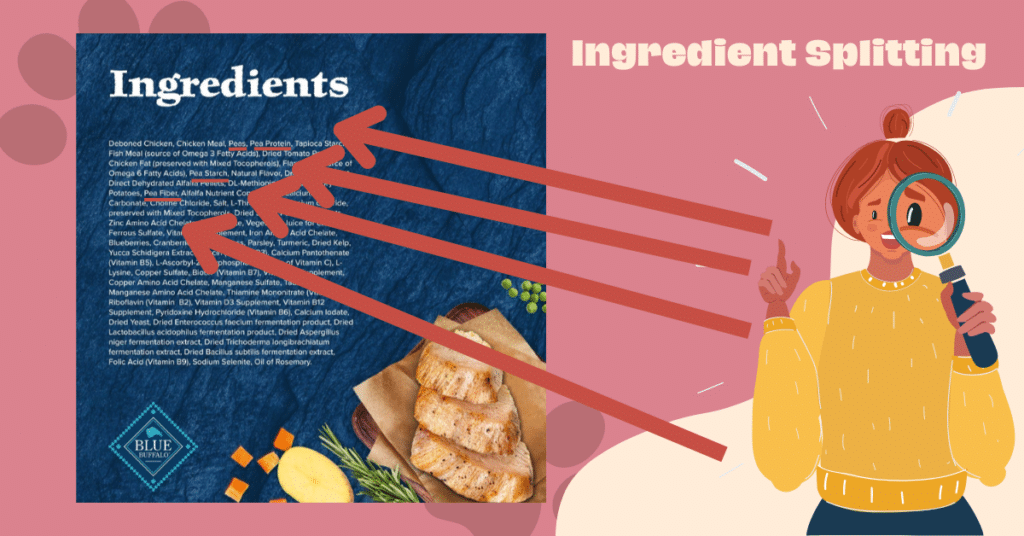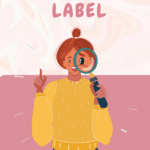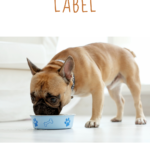Support for the blog comes from using the affiliate links below. At no additional cost to you, I may earn a commission on purchases. Thank you in advance.
Choosing the right dog food can be overwhelming with so many options available. It’s easy to get confused with all the colorful bags and marketing terms like “premium” and “natural.” However, the key is to understand the information on the dog food nutrition label rather than being swayed by flashy packaging or celebrity endorsements.
Many marketing terms don’t mean much, but the dog food label can mean everything.
While it may appear straightforward, deciphering the nutritional value behind the ingredients and percentages requires a keen eye and a basic understanding of what matters most. Luckily, with a little bit of knowledge, reading a dog food nutrition label isn’t all that challenging!
Understanding a Dog Food Nutrition Label
A dog food nutrition label provides a wealth of information about ingredients and nutritional content. But at first glance, it’s easy to get overwhelmed – I know I did! Luckily, learning to read pet food labels only takes a few minutes.
What Information is Found on Dog Food Labels?
Dog food labels may look like they contain a lot of information. It can look like a bunch of gibberish, but they really only describe a few things. Here’s what you’ll find on every pet food label:
- Brand and Product Name: Each label will contain the manufacturer and the specific food. You can think of this as the food’s “title.”
- Net Weight: The exact quantity of food in the bag.
- Feeding Guidelines: While it isn’t always right next to the ingredient list, many companies place the feeding guidelines nearby. These contain a starting point for how much to feed your dog.
- Nutritional Adequacy Statement: This statement confirms that the food meets the nutritional needs for a specific life stage (puppy, adult, senior) as determined by the Association of American Feed Control Officials (AAFCO). Ensure this is on any dog food you purchase and that it’s designed for your dog’s age.
- Guaranteed Analysis: I recommend glancing here first. This is a gold mine of nutritional information detailing the percentages of protein, fat, fiber, and moisture the food contains.
- Ingredient List: This lists all ingredients in the food, presented in descending order by weight.
It can take a minute to determine what’s what the first few times you look at a dog food nutrition label. Trust me, it gets easier with practice!
Here is my dog’s food label from Farmina:

Understanding Ingredient Lists
The ingredient list provides a window into what your dog is actually eating. Ingredients are listed in descending order by weight, with the first ingredient being the heaviest. Generally, the ingredients at the beginning of the list are more prevalent in the food than those at the end of the list.
That said, it doesn’t always work this way. There are a few loopholes to keep in mind when reading these lists.
Some food items contain a lot of water, which makes them heavy. Chicken is a great example of this.
However, everything must be dehydrated if you’re feeding your dog kibble. Still, dog food companies can choose to weigh items before dehydrating, making them appear higher on the ingredient list due to the water weight.
Most meats are like this. Meat products contain a lot of water. Most companies will weigh them before they’re dehydrated for this reason. It lets them put the meat higher on the list, even if they have to dehydrate the meat before putting it in the food.
If the ingredient list just provides the name of the meat, like “chicken” or “beef,” it’s weighed with the water still in it. Keep this in mind when figuring out how much meat is really in your dog’s food.
On the other hand, meat meals are the dehydrated form of the meat. If you see “chicken meal” or “beef meal,” the meat was dehydrated before it was weighed. Generally, foods that list these ingredients contain more meat.
Another way around the ingredient list is ingredient splitting. This process involves “splitting” an undesirable ingredient into several different ingredients, allowing the company to put it further down the list.
For instance, peas are a great example of this. Due to the concern surrounding peas in dog food, many dog food companies split up peas on the ingredient list. You may see “pea protein,” “pea starch,” and “pea fiber” all listed. These are the individual components of whole peas.
By listing them separately, the company gets to put them lower on the ingredient list, making it seem like there aren’t many peas in the food (when there really are).
Watch out for these two loopholes, and you’ll be well on your way to choosing quality dog food.

Source: Chewy
Guaranteed Analysis
The guaranteed analysis is much more straightforward than the ingredient list. It provides a more precise picture of the food’s nutritional content. It will tell you the minimum percentages of protein, fat, fiber, and moisture. Use this information to compare dog foods.
Because wet food always contains more moisture than dry food, its protein and fat content will seem lower. Therefore, this information is best for comparing within the same type of dog food, such as two kibble recipes. You can’t use it to accurately compare a wet food with a dry food, though.
AAFCO Pet Food Regulations
Pet food is not regulated in the same way that human food is. The Association of American Feed Control Officials (AAFCO) doesn’t control what dog food ends up on the market. However, they do play a role in ensuring the quality and safety of your pet’s food.
The AAFCO establishes nutrition profiles for different life stages (puppy and adult). Pet food that meets these nutritional profiles can include an AAFCO seal on the bag and be labeled as “complete and balanced.” Look for this seal and label to ensure the dog food you purchase meets your dog’s needs.
The vast majority of foods on the market do meet these standards. Some boutique options may not, though.
The AAFCO also sets guidelines for what must be included on the pet food label. For instance, every food must contain an ingredient list, guaranteed analysis, and feeding instructions. They also govern the regulations surrounding these labels. For instance, they require the ingredient list to be listed by weight.
The AAFCO also defines certain ingredients on the label. If you ever have a question about what an ingredient really means, you can check the AAFCO’s ingredient definitions.
While these regulations exist, they’re not federal law. Individual states determine how much of the AAFCO Model Regulations they adopt. You’ll often find dog foods that don’t have an AAFCO seal or follow these guidelines. I’ve found several at my local pet store.
For this reason, it is important to look for the AAFCO seal.
How is Dog Food Labeling Regulated?
Dog food labeling is a two-tiered system that involves the federal and state governments.
The FDA represents the federal arm of this system. They focus largely on safety. Like with human food, they ensure the food is safe to eat, free of harmful substances, and produced under sanitary conditions. If a food is toxic, the FDA will issue a recall.
However, the FDA is not involved with nutritional guidelines. That’s where the AAFCO and state regulation come in.
Individual states often have more specific regulations regarding pet food labeling. These are usually based on the AAFCO guidelines, but states can differ. Luckily, many states have adopted practically all of AAFCO’s guidelines.
The AAFCO sets nutritional requirements and ingredient definitions, for instance. However, the FDA requires an ingredient list.
The key takeaway is that the FDA sets a baseline for safety. The AAFCO presents regulations that are adopted by states to provide a more comprehensive labeling system that includes nutrition.
If food is on the shelf, you can usually rest assured that it’s safe for your dog to eat. It won’t be full of cyanide, for instance. However, you can’t ensure that it’s nutritionally complete unless it also has an AAFCO seal.
Final Thoughts
Understanding a dog food nutrition label might seem daunting at first glance. But with a little knowledge, it’s easy to sort through the ingredient list and guaranteed analysis. Remember, the key is to decipher the information on the label, not be intimidated by it!
Don’t hesitate to consult your veterinarian if you have any questions about your dog’s specific nutritional needs or have trouble interpreting a particular label. I’ve also found the AAFCO’s ingredient definitions very helpful. Some ingredients are surrounded by many conspiracies, and the definitions can help clarify things.
FAQs
What is the 95% rule for dog food?
The 95% rule for dog food applies to the naming of dog food products. It dictates the relationship between the product name and the primary ingredient. Simply put:
At least 95% by weight of the named ingredients must be from the animal source listed in the product name. This applies to single-ingredient names like “Chicken for Dogs” or “Salmon Dog Food.” If a food has one of these names, 95% of it must come from the ingredient listed. Water content isn’t included.
For products with multiple ingredients in the name (like “Chicken and Rice Dinner”), the combined weight of the named ingredients must be at least 95%. If a food is named “chicken and rice,” 95% of it must be chicken and rice. Dog food can have several items listed on some occasions, like “chicken, pea, and rice dinner.” In this case, these three ingredients must be 95% of the food.
There are some things this rule doesn’t cover, though. It doesn’t cover the exact kind of chicken or rice that’s included. It also doesn’t tell you what the other 5% is. While this other 5% is often vitamins and minerals, it could be just about anything.
This misconception often causes problems for dogs with food allergies. If your dog is allergic to chicken, you might assume a dog food named “beef dinner” is safe, but this isn’t necessarily true. The other 5% of ingredients could include chicken (and this is more common than you may think).
Always check the full ingredient list if you’re trying to avoid a specific ingredient. Don’t rely on the 95% alone.
What is on the nutrition label for dog food?
The dog food nutrition label must include certain information, including the brand and product name, net weight, feeding guidelines, ingredient list, and guaranteed analysis.
When you’re reading a nutrition label, the ingredient list and guaranteed analysis should be where your eyes go first. Use the ingredient list to ensure the food contains quality ingredients, and then use the guaranteed analysis to compare the food to others.
The feeding guidelines can also be helpful in understanding the true cost of food. For instance, if one food appears to be cheaper than another, but the feeding guidelines tell you to feed your dog twice as much, you probably aren’t saving much money!
Does dog food have nutritional standards?
The AAFCO sets recommended nutritional guidelines for dog food. However, these guidelines are not laws. For this reason, it’s important to look for the AAFCO seal when shopping for dog food. Otherwise, the food may not provide your dog with the proper nutrition!
Different guidelines are set for different life stages. The AAFCO has separate guidelines for puppies and adults. However, they don’t set guidelines for seniors, though this doesn’t mean your dog will never need a senior dog food.
Large breed puppies have their own nutritional guideline, as they require different nutrition than your average puppy. The AAFCO defines large breed puppies as dogs whose adult weight will be over 70 pounds. If your dog falls in this category, be sure to feed them a large breed puppy food formula to avoid health issues later on.
If dog food is labeled as “all life stages,” that means it meets the nutritional needs of adults and puppies. However, it doesn’t necessarily meet the needs of large-breed puppies.



